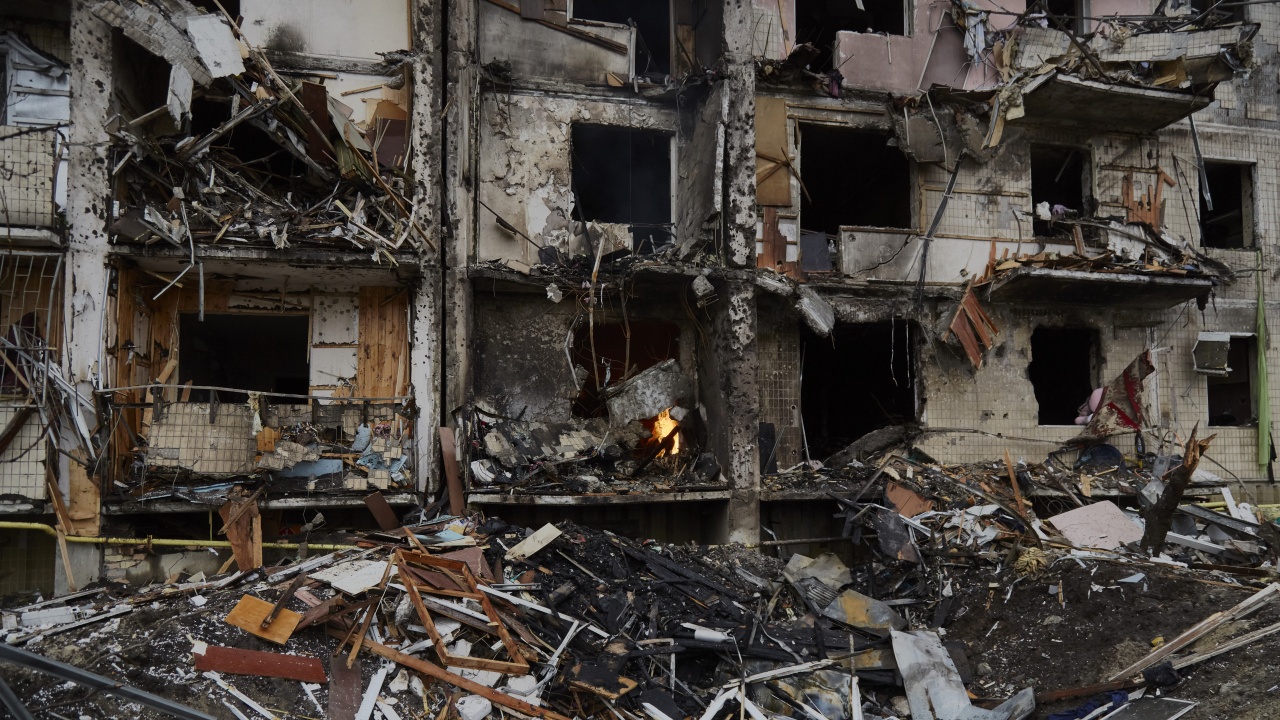Donbass - an industrial area in eastern Ukraine that Moscow says it wants to "liberate" - has been at the center of the bloody 2014 conflict between Kyiv and pro-Russian separatists, AFP reported.
Everything on the topic:
The Russian invasion of Ukraine 4486
With Moscow's support, the separatists took control of part of the Russian-speaking mining region and proclaimed two separatist "people's republics" there - Donetsk and Luhansk.
Of the nearly 6.6 million people living in Donbass by then, according to Ukrainian statistics, many have already left the region for Ukraine or Russia.
Migration has accelerated since the beginning of the Russian invasion on February 24.
There are no reliable data on the current population.
Russian President Vladimir Putin recognized the independence of the two separatist republics on February 21, three days before the invasion of Ukraine began, in the name of, among other things, "protecting" Russian-speaking people he said were discriminated against by Kyiv.
After many upheavals, the Russian army announced in late March that it was changing its plans to focus on "liberating Donbass".
Since then, Ukraine has been preparing for a large-scale offensive in the part it controls, and since Monday the bombing has intensified.
British Defense Ministry: Russia is in a hurry with the offensive in Ukraine because of May 9
Mining and metallurgical region
Donbass, abbreviated to "Donetsk Basin", is an area of nearly 55,000 square kilometers (nearly twice the area of Belgium) and is not an independent administrative unit, but consists of the Ukrainian Donetsk and Luhansk regions.
Over the centuries, this is a densely populated area divided between the Crimean Tatars and the Ukrainian Cossacks.
The economic development of Donbass dates back to the 19th century, when the region was located within the borders of the Russian Empire, and the first coal deposits were discovered there.
This border region of Russia, which stretches to the besieged port of Mariupol on the Azov Sea, hides huge reserves of coal and iron ore, which made it an industrial center of the Soviet Union.
It was in this area in the 1930s that Alexei Stakhanov (from whom the "Stakhanov movement" originated) worked, becoming a role model for the Soviet authorities.
Russia's second ultimatum to Ukrainian fighters in Mariupol was also ignored
Strong identity
Until the 2014 war, the largest city in the Donbass, Donetsk, and its environs were Ukraine's largest metallurgical center.
The densely populated area is still dotted with factories and mines with very difficult working conditions.
The presence of many Russian-speaking residents there is mainly due to the sending of Russian workers to the area after World War II.
This industrial and linguistic heritage predetermines the identity of Donbass, which has maintained strong economic and cultural ties with Russia since the collapse of the Soviet Union and the proclamation of Ukraine's independence.
Moscow justifies its support for the separatists by the fact that this Russian-speaking community is discriminated against, mainly after the pro-European movement born of the events on the Maidan in Kyiv, which caused the fall of pro-Russian Ukrainian President Viktor Yanukovych in spring 2014.
British intelligence expects a "war of attrition" in Ukraine
The conflict from 2014 until now
The conflict between Ukrainian forces and separatists in Donetsk and Luhansk erupted in the spring of 2014 following the fall of Yanukovych and the annexation of the Crimean peninsula by Russia.
The Minsk agreements, signed in 2015 with the mediation of France and Germany, provided for the restoration of peace in the region.
However, Kyiv and the separatists accused each other of violating the ceasefire during the eight years of war.
Ukraine and its Western allies have also accused Moscow of providing military assistance to separatists to fuel the conflict, which killed more than 14,000 people.
The independence of the Donetsk and Luhansk "people's republics", proclaimed in 2014 after referendums, has not been recognized by the international community.
After separatist control of Donetsk, Kramatorsk, whose station was hit by a rocket attack on April 8 this year, claimed 57 lives, became the capital of the Donbass region under Ukrainian control and is now a major target of Russian invasion.
The Russian invasion of Ukraine
Donbass
